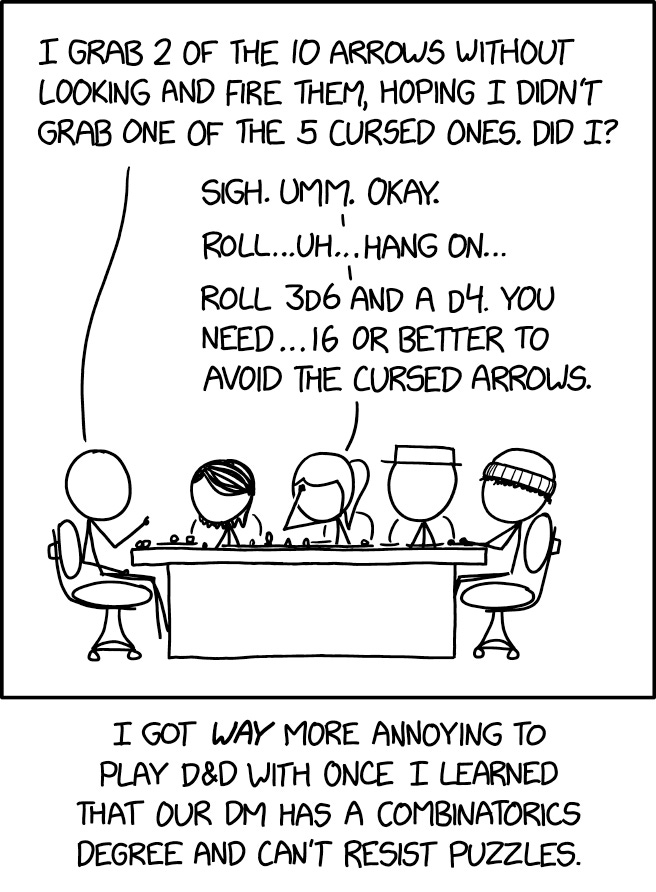Did xkcd Get Its Math Right?¶
Fiddler¶
From Seth Cohen comes a comical conundrum:
Seth recently saw the following xkcd webcomic by Randall Munroe:

The question is, very simply: Is this comic mathematically correct?
In other words, let p represent the probability that if you randomly select two arrows from a group of 10 (five of which are cursed), neither arrow is cursed. And let q represent the probability that if you roll three d6 dice (cubes with faces numbered 1 through 6) and one d4 die (a tetrahedron with faces numbered 1 through 4), the sum of the rolls is at least 16.
Does p equal q? If so, determine their common value. If not, determine the value of each.